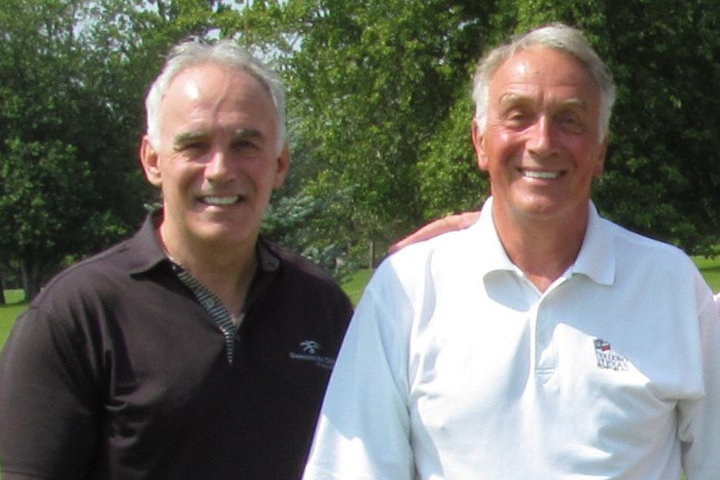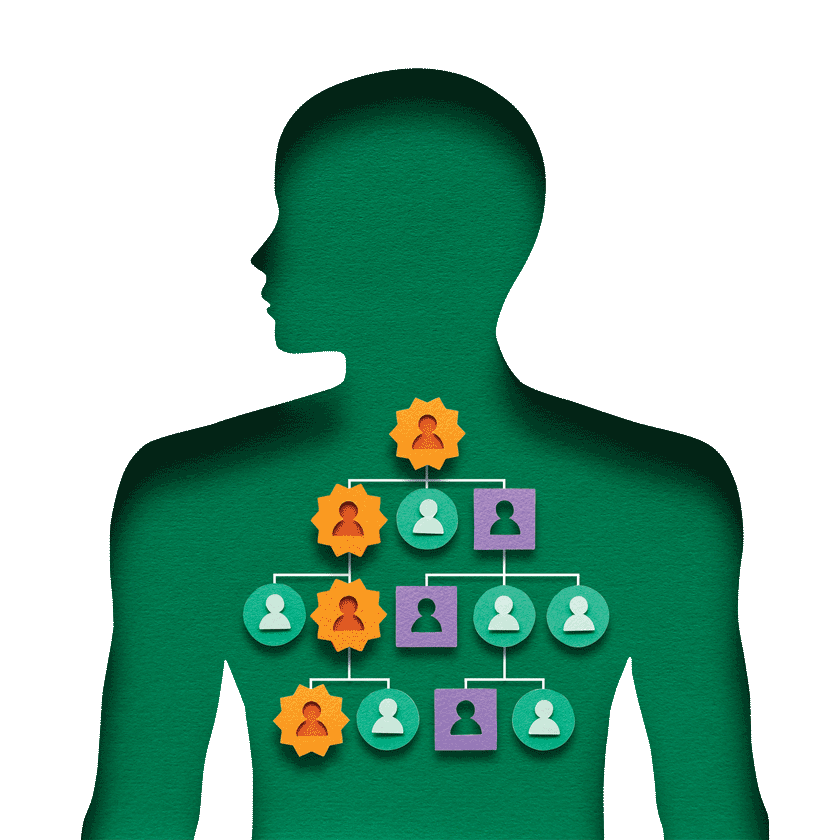Younger Brother’s Pancreatic Cancer Leads to Regular Screening for his Oldest Brother

- Both brothers knew they carried the BRCA2 mutation
- Scott has chemotherapy, radiation, and a Whipple
- Steve gets regular screening, and is diagnosed early as a result
Brothers Scott and Steve Nelson both had pancreatic cancer, 13 years apart.
The family knew that cancer was common on their mother’s side. Their mother, who had breast cancer at age 52, underwent genetic testing in 2002. She was found to have the BRCA2 mutation. Scott and Steve were tested in 2003 and found to have the mutation as well.
The Nelsons’ story emphasizes the importance of genetic testing and regular screening, as well as brotherly love.
Scott Gets Diagnosed
I was 50 years old in 2004 and decided to take better care of my health, starting with my cholesterol level. I was seeing my doctor periodically to get the level right when I began to feel sick to my stomach for a while. My doctor saw something unusual in my latest blood test and ordered an ultrasound. A tumor was found on my pancreas. My appointment with a local surgeon wasn’t for a few days, so I spent the weekend searching the internet for information. The information I found was grim; it was the worst weekend of my life.
The local surgeon wanted to operate right away, but I decided to get a second opinion at the Mayo Clinic. The specialist at Mayo referred me to Dr. Tim Sielaff (no longer active) at the Virginia Piper Cancer Institute, Abbott Northwestern Hospital in Minneapolis. Getting a second opinion and going to a pancreatic cancer specialist made all the difference for me.
Dr. Sielaff recommended that I have a Whipple procedure, but after more tests we found that the tumor was around a blood vessel. This meant I would need chemotherapy and radiation to shrink the tumor before I could possibly have the surgery. Dr. Sielaff recommended that I join a clinical trial he had co-written, and sent me to Dr. Edward Greeno, a hematologist/oncologist at the University of Minnesota. I had chemotherapy with cisplatin, fluorouracil (5-FU), and immunotherapy with interferon alpha, plus high doses of radiation, spread out over eight weeks.
The trial worked, and I was able to have the Whipple surgery. After I recovered, I had more high-dose chemotherapy with 5-FU. When I completed that treatment I was declared cancer-free. I had scans regularly for six years, but that was cut back and now I get scans every few years.
The fear and isolation I felt after diagnosis and during treatment has led me to become a patient advocate. I am a member of PanCAN’s Survivor & Caregiver Network, where I talk to people who are just starting to go through diagnosis and treatment, as well as doing advocacy work with many other organizations, including the Stand Up To Cancer–Lustgarten Foundation Pancreatic Cancer Interception Dream Team, the Mayo Clinic, and the ALS Association Minnesota/South Dakota/North Dakota Chapter (in the area of patient care and support). I am doing what I can to make sure no one else has to go through the experience I had over that weekend after my diagnosis. I give them hope.
Although he did not know it at the time of his diagnosis, Scott’s BRCA2 mutation had put him at a higher risk for getting pancreatic cancer. In the time since he was treated, research has shown that platinum-based chemotherapy—like the cisplatin he had—works better in patients with a BRCA2 mutation.
Family History Makes Steve Vigilant About Regular Screening
I had prostate cancer two years after Scott’s pancreatic cancer. With one cancer already, and knowing about the BRCA2 mutation, I and several of my siblings decided to join the Cancer of the Pancreas Screening Study (CAPS) program based at Johns Hopkins in Baltimore in 2009. Because I live in Minnesota, I was able to have my initial testing with Dr. Mark Topazian at the Mayo Clinic. I continued to see him after my CAPS screening.
My initial endoscopic ultrasound (EUS) showed a pancreatic neuroendocrine tumor and a cyst in the head of my pancreas. I was very concerned, but Dr. Topazian reassured me that this was not necessarily cancer. We began a program of close screening. At first it was every six months, then it was lowered to once a year, and then every two years. But in 2017 the EUS showed that my pancreatic duct was getting narrower. I had an endoscopic retrograde cholangiopancreatography (ERCP) and a stent was inserted to open the duct. As part of the procedure, some cells were collected.
When I met with Dr. Michael Kendrick, my surgeon, after the procedure, he said, “Your cells are telling us they’re about to start something really bad.” Because of our family history, I decided to have surgery. I had a laparoscopic distal pancreatectomy. During the surgery the remainder of my pancreas and my lymph nodes were checked and no cancerous cells were found. Because the surgery was done laparoscopically, I was pretty much back to normal in two months.
I still get followed at Mayo. I have benefitted from the research advances, and from my brother’s experience. Scott has been dedicated to patient advocacy for many years, but for me it was much more intermittent and done primarily to support him. That is, until my successful surgery. Now we have teamed up to tell our story, which we have been told is quite unique.
Scott’s journey was long and extremely difficult, and he defied the odds. My success is a result of knowledge gained from his experience and taking a proactive approach with early detection and screenings. The result is that we found the cancer in its earliest stages, were able to remove it completely, and so I avoided further treatments.
Embracing the situation early on rather than hiding from the reality of it saved my life! That is the story Scott and I want to tell, and with it we can bring a measure of hope to pancreatic cancer patients and their families.
Both brothers have attended fundraising events and lobbied in Washington, D.C., for funding on behalf of PanCAN, but they agree that the most rewarding conversations have been with those directly affected by this terrible disease and their families.
Watch Scott and Steve tell their stories in the video “Identify Your Risk Early.”






